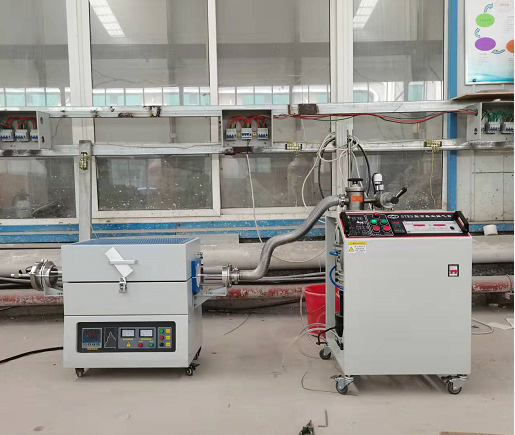A tube furnace is a type of heating device used for high-temperature applications, material processing, heat treatment, and research in various industries such as materials science, chemistry, electronics, and more. It consists of a cylindrical heating chamber (the "tube") that surrounds the sample being heated. The sample can be placed inside the tube or within a sample holder that's inserted into the tube. Tube furnaces are designed to provide controlled and uniform heating environments.
Key Features and Components:
Heating Element: The heating element, usually made of materials like ceramic or metal, is wound around or inserted into the tube to generate heat. The type of heating element used determines the maximum achievable temperature.
Insulation: High-quality insulation surrounds the heating element to ensure efficient heat retention within the tube, minimizing heat loss to the surroundings.
Temperature Control System: Tube furnaces come with sophisticated temperature control systems that regulate and maintain the desired temperature with high accuracy. These systems can be manually adjusted or controlled through digital interfaces.
Thermocouples: Thermocouples or other temperature sensors are used to monitor the actual temperature inside the tube and provide feedback to the control system for accurate temperature regulation.
Gas Flow and Atmosphere Control: Some tube furnaces have provisions for controlling the gas flow and atmosphere inside the tube, allowing for processes in controlled atmospheres such as inert gases or reactive gases.
Sample Holders and Supports: Various sample holders, boats, trays, or supports can be used to hold the sample securely within the heating zone while ensuring proper heat transfer.
Safety Features: Modern tube furnaces include safety features like over-temperature protection, circuit breakers, and interlocking mechanisms to ensure safe operation.
Applications of Tube Furnaces:
Materials Research: Tube furnaces are extensively used in materials science to study the synthesis, processing, and behavior of materials at high temperatures. This includes crystal growth, sintering, and phase transformations.
Heat Treatment: Tube furnaces are employed in heat treatment processes, such as annealing, tempering, and quenching, to alter the mechanical properties of materials.
Chemical Processing: Many chemical reactions require elevated temperatures for processing. Tube furnaces facilitate these reactions while maintaining precise temperature control.
Ceramics and Glass Processing: Tube furnaces are utilized in the fabrication of ceramics, glass, and other refractory materials due to their ability to achieve high temperatures required for melting and shaping.
Thin Film Deposition: In electronics and semiconductor industries, tube furnaces can be used for chemical vapor deposition (CVD) and other thin film deposition processes.
Environmental Testing: Tube furnaces are employed for environmental testing and aging studies on materials and components under controlled temperature conditions.
Conclusion:
Tube furnaces are versatile tools that provide controlled high-temperature environments for a wide range of applications. Their ability to achieve precise temperature control and accommodate various sample sizes and shapes makes them indispensable in research, manufacturing, and development processes across multiple industries.
More specifications three zone furnaces, quartz tube furnaces

